- Book Online & Save
- Flexible Rescheduling
- Under 2's Go Free
- SEA LIFE, Shark Walk
Discover our Shark Species
Sharks have lived in our oceans for more than 420 million years! That makes them older than trees! Their brains have evolved to become more intelligent and devoted to their senses – mainly their ability to smell. There are over 500 species of shark in our oceans and you’ll meet lots of them when you explore our Pacific Shipwreck!
SEA LIFE Trust is actively working with the Shark Trust to campaign against unsustainable shark fishing in EU waters. SEA LIFE is also proud to be coordinating the European Black Tip Reef Shark breeding programme.
Discover the shark species you will meet here at SEA LIFE London below...
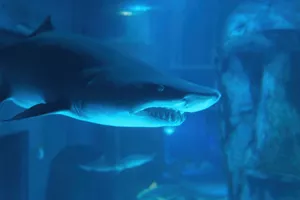
Sand Tiger Shark
Sand Tiger Sharks look ferocious with a mouth full of pointy teeth, but our divers regularly jump in with them because they aren't dangerous to humans. They are, however, voracious predators of small fish, crustaceans and squid, feeding mostly at night and close to the ocean floor.
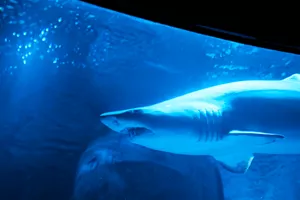
They are curious creatures
They come up to the surface of the water to gulp air and hold it in their stomachs. Sharks are naturally negatively buoyant which means they sink if they stop swimming. Holding air in their tummy like a balloon enables Sand Tigers to float motionless in the water without sinking. So they can silently drift up close to their prey and quickly snatch it in their jaws.
They can grow to be over 3 metres long and are found in warm or temperate waters throughout the world’s ocean, with the exception of the Eastern Pacific.
Did you know?
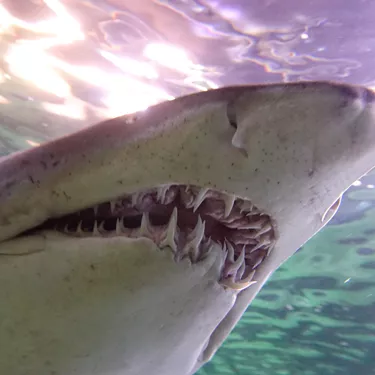
Many names
Sand Tiger Sharks are also known as Grey Nurse Sharks or Spotted Ragged Tooth Sharks.
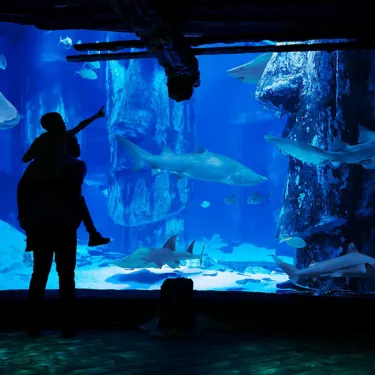
Say hello
Our Sand Tiger Sharks are called Bungle and Zippy and are both boys. Don't forget to say hello to them on your next visit!
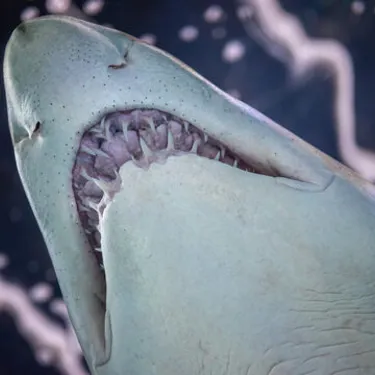
Wow!
Despite its fearsome appearance and rows of sharp teeth, the Grey Nurse shark offers no threat to humans and is, in fact, a superbly adapted fish-eater, usually swallowing its prey whole.
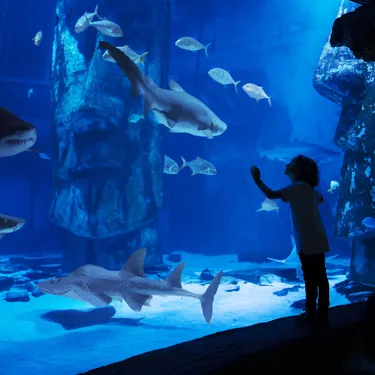
Sharks under threat
During the 1960s and 1970s, the population of the Sand tiger shark declined sharply and in 1984, they became the first shark species in the world to be awarded protected status
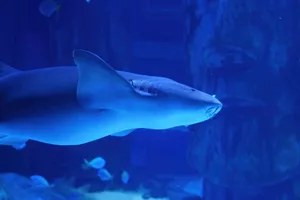
Nurse Shark
To spot a Nurse Shark, look for the shark with the funny moustache! These dangley bits on their top lip are actually useful things called barbels. Barbels are covered in taste buds and are very sensitive, helping the Nurse Shark to find food hidden in the sandy seabed.
Nurse sharks prefer to dwell near the seafloor in the warm, shallow waters of the western Atlantic and eastern Pacific oceans, they can grow up to 9.5ft.
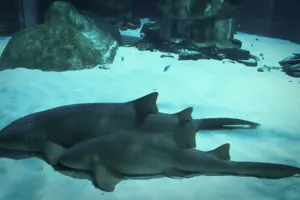
Bottom Dwellers
Most sharks must keep moving to breathe. That's because they need water to flow over their gills. However, Nurse Sharks can stop swimming and rest because they can pump water through their mouths and gills while they're sitting still.
In the ocean Nurse Sharks can gather in groups of up to 40. They hide together under submerged ledges around coral reefs, often piled up on top of each other. At night, they become more active and venture out on their own to prey on sea snails, crustaceans, molluscs and other small fish.
We have four Nurse Sharks. Their names are Ashley, Belle, Lady Grey and Dean. Belle is the biggest and Dean is the smallest.
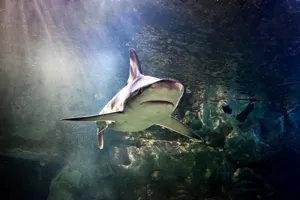
Blacktip Reef Shark
We love our Blacktip Reef Sharks. They’re jaw-some! With the prominent black markings on their fins, they are easy to spot.
Found on the tropical coral reefs of the Indian and Pacific Oceans, Blacktip Reef Sharks prefer shallow, inshore waters.
The blacktip reef Shark's diet is composed primarily of small teleost fishes, including mullet, groupers, grunters, jacks, mojarras, wrasses, surgeonfish and smelt-whitings.
Fin-tastic Facts
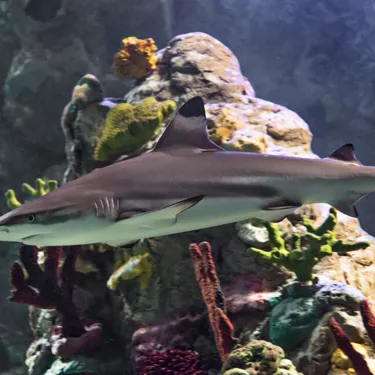
These sharks are vivacious
They give birth to live young rather than laying eggs. In early years of their life Blacktip Reef Sharks often fall prey to larger fish such as groupers, Tiger Sharks, or even bigger Blacktip Reef…
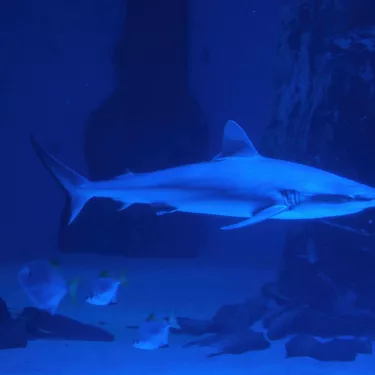
Babies
Juvenile Black Tips often use mangroves as a nursery ground; Hiding amongst the tightly woven roots where bigger Sharks can't reach them.
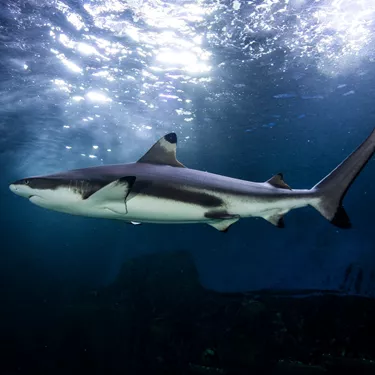
How big?
Blacktips can grow up to 120 centimetres in length and feeds on crustaceans and other small fish.
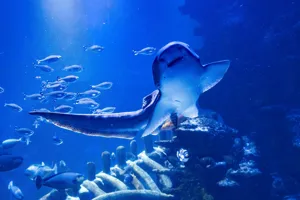
Zebra Shark
The Zebra shark is a slow-moving species that feeds on the sandy bottom on the sea primarily on molluscs and gastropod. This species grows to around 2.4m but has been recorded around 3.5m long.
You can spot Zebby our Zebra Shark in our Open Oceans zone
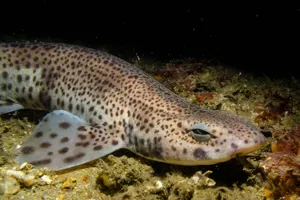
Lesser Spotted Dogfish
It might surprise you to see that Dogfish are actually a type of shark. The Lesser Spotted Dogfish is one of the most abundant Shark species in the Northeast Atlantic and Mediterranean.
Rarely growing any longer than 80cm in length, these cute little sharks are opportunistic predators which feed on a wide range of shellfish and crustaceans.
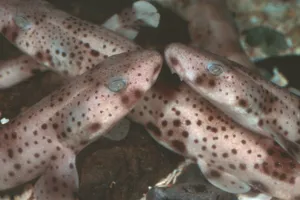
They are also known as Rock Salmon
Fish & chips shops often sell this species of Dogfish under the name Rock Salmon. Another small species of shark, the Spiny Dogfish, has been overfished for its use in Rock Salmon and is now Critically Endangered as a result.
Sharks do not cope with commercial fishing pressure as they reproduce too slowly, so we highly recommend that you avoid Rock Salmon or any Shark if you spot it on a menu.
Did you know?

Species of shark
Did you know there are over 400 different species of sharks! Here at SEA LIFE London we have 6
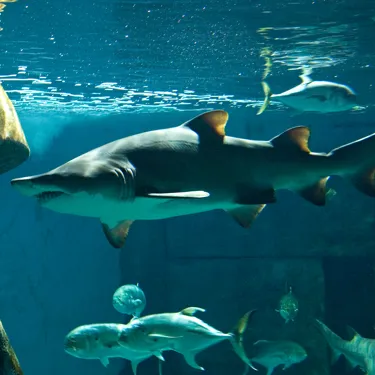
No dentist needed
Many species of sharks have several rows of teeth which they can lose and replace thousands of times in their lives.
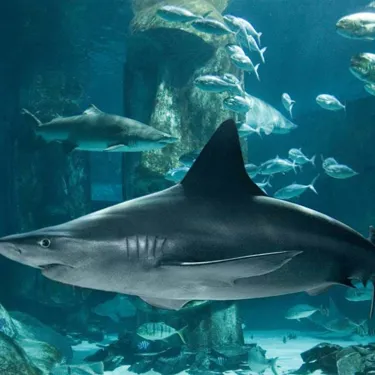
Big & Small
Sharks come in all shapes and sizes. The biggest sharks today can grow up to 12 meters long and the smallest is around the size of your hand!
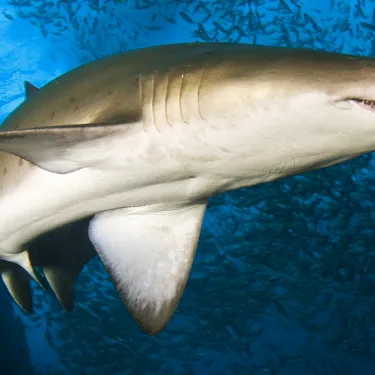
Under threat
Sharks are in danger of disappearing. Many sharks get caught in fishing gear or are hunted for their fins.

Bite-Back Shark & Marine Conservation
SEA LIFE London is proud to sponsor Bite-Back Shark & Marine Conservation and their fight to make the UK shark-fin free!
Book online now
Book early from
£28
Per adult
On the day
£40
Per adult
- Entry at your chosen 15-minute time slot
- Discover species from around the world in 14 themed zones and interact with them at with our public feeding, diving displays and touch pools
-
Book early & save!
Skip the Gate Pricing: Tickets booked online in advance are consistently cheaper than purchasing on the day, so you can enjoy more for less.
Ticket Type Save 30% - Advance Booking Off-peak Weekdays Peak On the day / Walk-up Adult
From £28 From £33 £40 Child (2 - 15 years)
From £25 From £30 £36 Under 2
Free Free Free Please note online ticket prices vary depending on available capacity and prices may fluctuate during periods of high demand.
Book early from
£33.50
Per adult
On the day
£50
Per adult
- Arrive at any time on the day of your choice
-
Book early & save!
Skip the Gate Pricing: Tickets booked online in advance are consistently cheaper than purchasing on the day, so you can enjoy more for less.
Ticket Type Save 33% - Advance Booking Off-peak (Weekdays) Peak On the day / Walk-up Adult
From £33.50 From £43 £50 Child (2 - 15 years)
From £30.50 From £35 £42 Under 2
Free Free Free Please note online ticket prices vary depending on available capacity and prices may fluctuate during periods of high demand.
Online from
£31
Per adult
On the day
£44
Per adult
- Standard entry at your chosen time slot
- Be transported to the depths of the ocean in this exhilarating, state of the art virtual reality experience